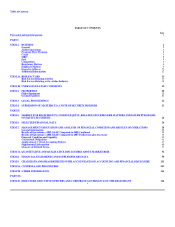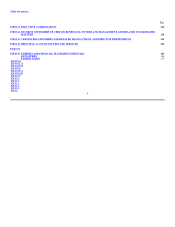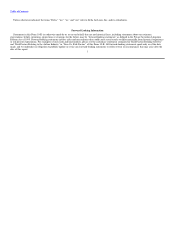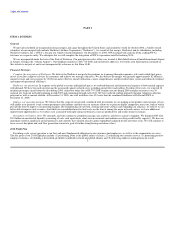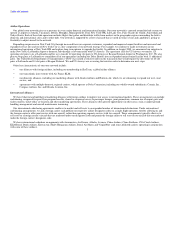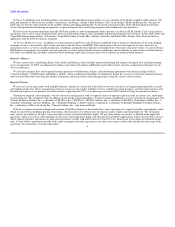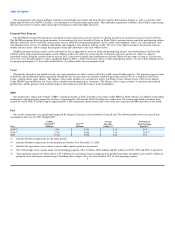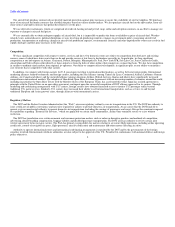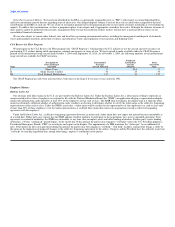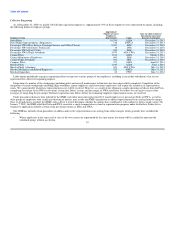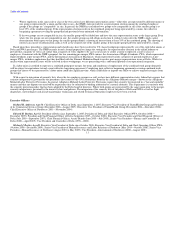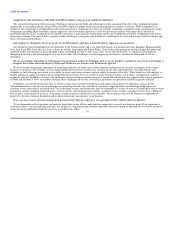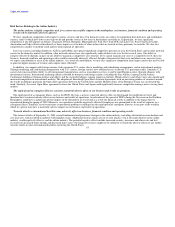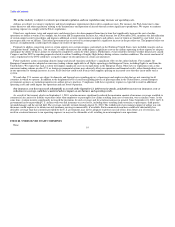Delta Airlines 2009 Annual Report Download - page 14
Download and view the complete annual report
Please find page 14 of the 2009 Delta Airlines annual report below. You can navigate through the pages in the report by either clicking on the pages listed below, or by using the keyword search tool below to find specific information within the annual report.
Table of Contents
Other Environmental Matters. We have been identified by the EPA as a potentially responsible party (a "PRP") with respect to certain Superfund Sites,
and have entered into consent decrees regarding some of these sites. Our alleged disposal volume at each of these sites is small when compared to the total
contributions of all PRPs at each site. We are aware of soil and/or ground water contamination present on our current or former leaseholds at several domestic
airports. To address this contamination, we have a program in place to investigate and, if appropriate, remediate these sites. Although the ultimate outcome of
these matters cannot be predicted with certainty, management believes that the resolution of these matters will not have a material adverse effect on our
consolidated financial statements.
We are also subject to various other federal, state and local laws governing environmental matters, including the management and disposal of chemicals,
waste and hazardous materials, protection of surface and subsurface waters and regulation of air emissions and drinking water.
Civil Reserve Air Fleet Program
We participate in the Civil Reserve Air Fleet program (the "CRAF Program"), which permits the U.S. military to use the aircraft and crew resources of
participating U.S. airlines during airlift emergencies, national emergencies or times of war. We have agreed to make available under the CRAF Program a
portion of our international range aircraft from October 1, 2009 until September 30, 2010. As of October 1, 2009, the following numbers of our international
range aircraft are available for CRAF activation:
Number of
Description of International Aeromedical Total
Event Leading to Passenger Aircraft Aircraft by
Stage Activation Aircraft Allocated Allocated Stage
I Minor Crisis 11 N/A 11
II Major Theater Conflict 30 25 55
III Total National Mobilization 137 33 170
The CRAF Program has only been activated twice, both times at the Stage I level, since it was created in 1951.
Employee Matters
Railway Labor Act
Our relations with labor unions in the U.S. are governed by the Railway Labor Act. Under the Railway Labor Act, a labor union seeking to represent an
unrepresented craft or class of employees is required to file with the National Mediation Board (the "NMB") an application alleging a representation dispute,
along with authorization cards signed by at least 35% of the employees in that craft or class. The NMB then investigates the dispute and, if it finds the labor
union has obtained a sufficient number of authorization cards, conducts an election to determine whether to certify the labor union as the collective bargaining
representative of that craft or class. Under the NMB's usual rules, a labor union will be certified as the representative of the employees in a craft or class only
if more than 50% of those employees vote for union representation. A certified labor union then enters into negotiations toward a collective bargaining
agreement with the employer.
Under the Railway Labor Act, a collective bargaining agreement between an airline and a labor union does not expire, but instead becomes amendable as
of a stated date. Either party may request that the NMB appoint a federal mediator to participate in the negotiations for a new or amended agreement. If no
agreement is reached in mediation, the NMB may determine, at any time, that an impasse exists and offer binding arbitration. If either party rejects binding
arbitration, a 30-day "cooling off" period begins. At the end of this 30-day period, the parties may engage in "self help," unless the U.S. President appoints a
Presidential Emergency Board ("PEB") to investigate and report on the dispute. The appointment of a PEB maintains the "status quo" for an additional 60
days. If the parties do not reach agreement during this period, the parties may then engage in "self help." "Self help" includes, among other things, a strike by
the union or the imposition of proposed changes to the collective bargaining agreement by the airline. Congress and the President have the authority to prevent
"self help" by enacting legislation that, among other things, imposes a settlement on the parties.
9


